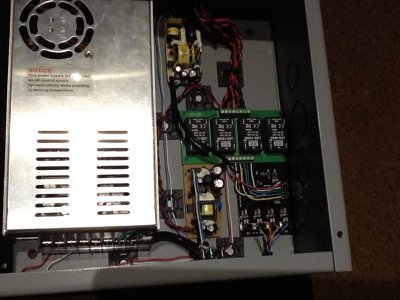megadeth72
New member
Hey guys,
First of all, Awesome discussion and great work by rrasco and O2Surplus! I've been creepin' around this thread quietly for some time now and thought I'd chime in.
rrasco and O2: What about connecting the CTRL/PWM pin of the driver to the ground plane via an optional 10K pull-down resistor? This will pull the pin voltage to ground if the PWM signal is ever lost, which will prevent the driver from failing high (and will instead fail off)? Basically you just need to create a trace with a spot for a resistor to connect to the ground plane. For people without controllers you'd just leave this spot empty; for people with controllers, adding a 10K resistor will add at most 1mA draw per PWM signal to your controller and have the added safety of having the lights fail off.
Just you wait until you're on vacation and the fishsitter accidentally tugs on the PWM cable and you come home to find your LEDs have been on at 100% for a week straight! A few $0.02 resistors could save you thousands in livestock.
My other question to the community: Does anyone have an extra 4-up LDD-H 10cmx5cm board that they could part with? Please PM me if you do! I just need one.
Cheers,
Kevin
I think this is a good idea, I'm going to add resistors to mine, if I unplug my arduino my drivers go full blast


